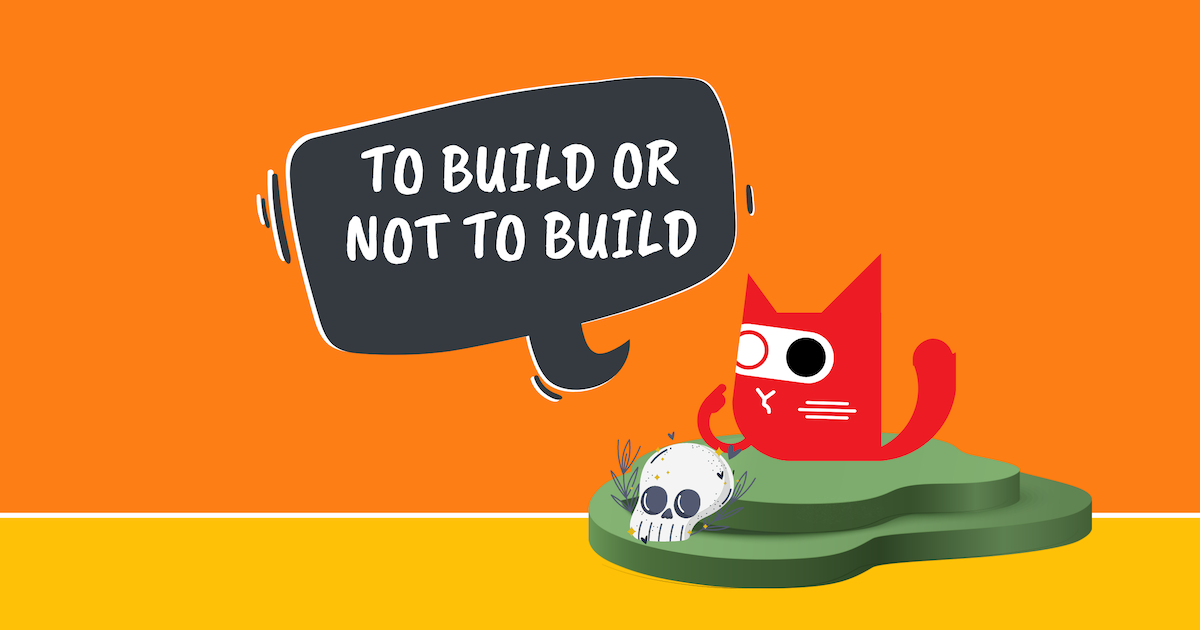Feature Flags: Build Your Own or Go with ConfigCat?
When it comes to shipping features fast and confidently, feature flags are your secret weapon. They let you roll out updates safely, test in production, and avoid deployment risks. But here's the big question: should you build your own feature flag system, or choose a ready-made solution like ConfigCat?

The DIY Dilemma: Is It Worth It?
The idea of building your own feature flag system sounds exciting, right? You're in full control, calling the shots. But before you grab your tools, let's take a closer look.
Benefits of In-House Feature Flag Systems
- Customization and Flexibility: Building your own feature flagging system means you can design it to fit exactly how your team works. You can make changes to suit your development process and integrate it with your tools however you like.
- Ownership and Control: When you build it yourself, you're in charge. You don't have to rely on a third party for updates or changes. You can adjust the system whenever you need, which is especially important for teams in industries with strict regulations.
- Adaptability: Your system can grow and change as your team's needs evolve. Unlike a third-party service, you won't be limited by someone else's roadmap or updates.
- Direct Integration with Existing Systems: Since you're building the system yourself, you can make sure it integrates perfectly with your existing workflows, tools, and pipelines. This can make deployment faster and easier.
- Data Security: Building in-house means you control your data. You don't have to worry about sending sensitive information to a third-party provider.
Challenges of In-House Feature Flag Systems
- Time and Resources: Building a feature flagging tool from scratch requires a dedicated team of developers, designers, and infrastructure specialists. Even with these resources, the time and effort required to develop, test, and deploy the tool can be considerable, diverting attention from core product development and delaying other high-priority tasks.
- Ongoing Maintenance: An in-house feature flag system doesn’t end with its initial launch. You'll need to update it regularly, fix bugs, and make sure it's secure. This can become a burden over time, especially for teams prioritizing product innovation over tool upkeep.
- Scalability Issues: As your team grows and your product becomes more complex, your in-house system might struggle to keep up. You'll need to plan carefully to make sure it can handle increased traffic and features.
- Competitive Lag: While your in-house system is working, other third-party feature flagging tools are constantly improving. Without constant updates, your system might not be able to compete with the features and performance of third-party solutions.
Why Buy a Feature Flagging Tool?
Benefits of Using a Ready-Made Solution
- Rapid Deployment: A third-party feature flag service like ConfigCat is immediately available and ready to integrate within minutes or hours. You don't have to spend months developing your own system.
- Robust Features Out of the Box: ConfigCat offers powerful, tried-and-tested features right from the start, including dashboards, integrations, and various granular user targeting features. These advanced capabilities would take significant time for an in-house team to replicate.
- Ongoing Support and Maintenance: The service provider takes care of updates, bug fixes, and new features, so you don't have to worry about it. Your team can focus on building your product instead.
- Scalability and Reliability: Feature flagging tools like ConfigCat are designed to handle large-scale applications, often using distributed architecture to ensure uptime and performance. You don't need to worry about performance as your company grows.
- Cost-Effectiveness: While there's a subscription fee, using a third-party service is often more cost-effective than building and maintaining your own system. You get a full-featured solution without the long-term costs of development.
- Data Security Concerns: It's common for teams to worry about data exposure or compliance when using third-party services. But ConfigCat takes a privacy-first approach. Feature flag evaluations happen entirely on the client side—the SDK runs locally, and no user data is ever sent to ConfigCat’s servers. With a strict zero data collection strategy, ConfigCat keeps your data fully under your control.
Challenges of Using a Purchased Solution
- Dependence on the Vendor: Relying on a third-party service means that updates, support, and feature requests depend on the vendor's roadmap and priorities. If their updates don't line up with your needs, it can cause delays.
- Less Customization: Off-the-shelf solutions may not offer the level of customization that an in-house solution does, potentially leading to compromises in how features are implemented. You may want to adjust your workflows to fit their features.
So, Should you Build or Buy?
The choice comes down to your team’s needs and resources. Building in-house gives you control and customization but requires significant time and upkeep. Ready-made solutions like ConfigCat offer quick deployment, powerful features, and dependable support—without the overhead.
Ready to experience it yourself? With ConfigCat's forever free plan, you can get started in minutes and see why buying beats building. 👉 Sign up now and supercharge your development process!
For more feature flagging goodies, stay connected to ConfigCat on X, Facebook, LinkedIn, and GitHub.
